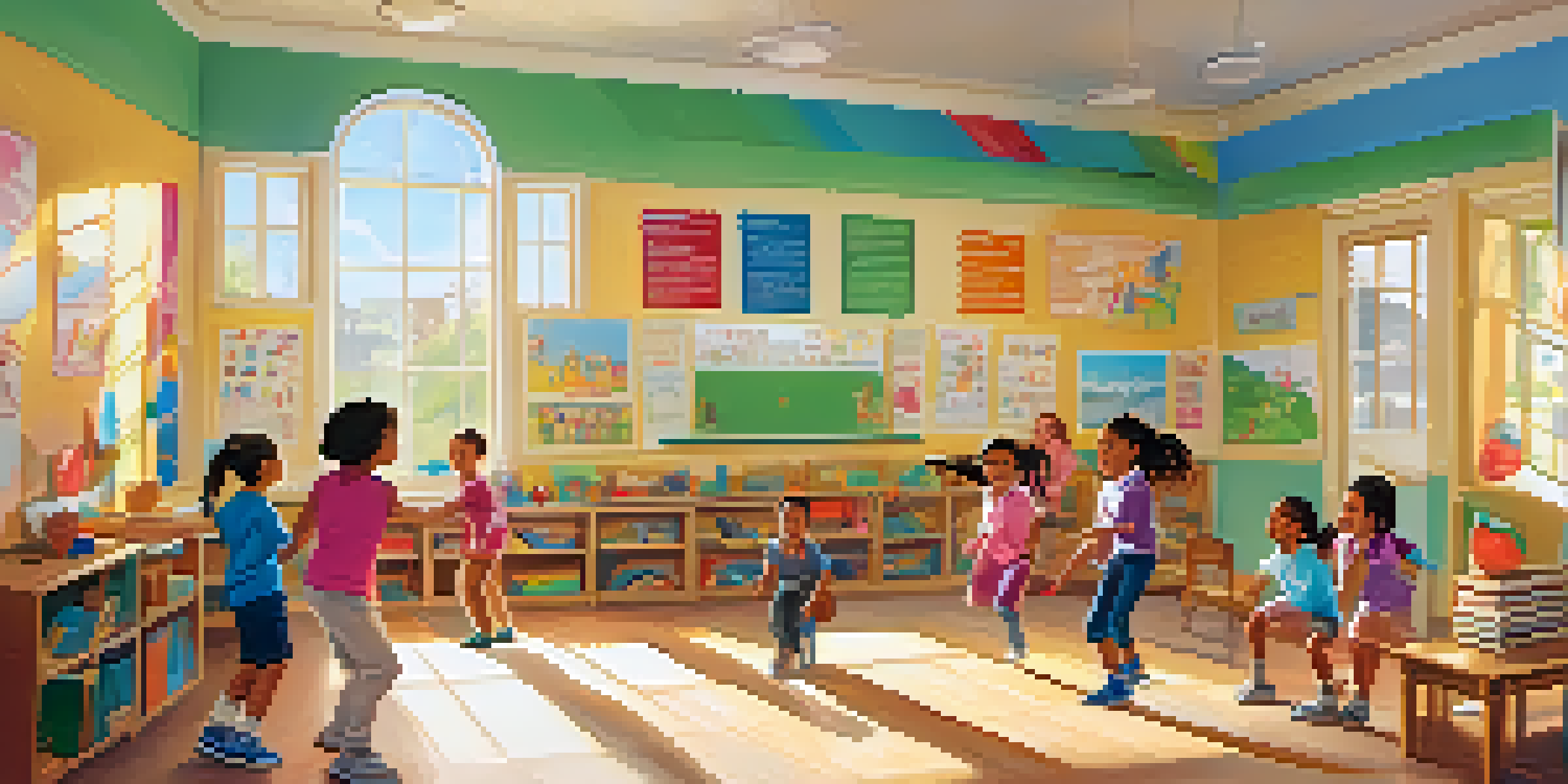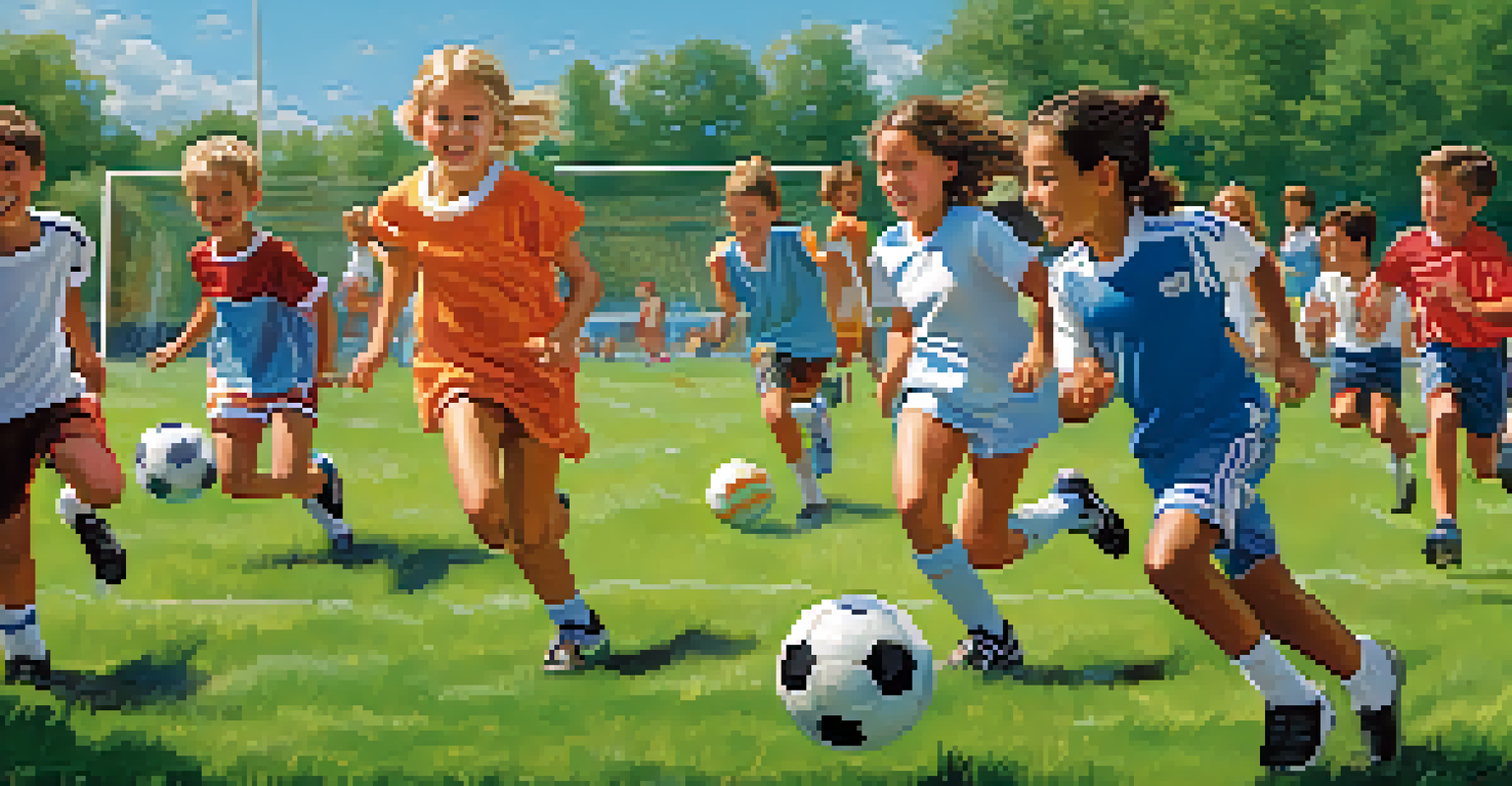The Link Between Physical Activity and Early Learning

Understanding Early Learning and Its Importance
Early learning is a critical stage in a child's development, laying the foundation for future education and social skills. During these formative years, children absorb knowledge and experiences that shape their cognitive abilities and emotional well-being. Engaging in various activities—whether it's playing with blocks or singing songs—helps them develop essential skills and confidence.
Play is the highest form of research.
The significance of early learning cannot be overstated; it influences everything from academic success to interpersonal relationships later in life. Children who thrive in early learning environments often exhibit better problem-solving skills and emotional regulation. Thus, fostering an engaging and stimulating environment is crucial for nurturing these young minds.
As we explore the connections between physical activity and early learning, we uncover how movement can enhance these developmental milestones. It’s essential to create opportunities for children to be active, as this can lead to richer learning experiences and a more profound understanding of the world around them.
The Science Behind Physical Activity and Brain Development
Research shows that physical activity stimulates brain development, particularly in young children. When kids engage in movement, their brains release endorphins, which improve mood and cognitive function. This natural boost can enhance concentration and memory—two key components of successful learning.

Moreover, physical activity increases blood flow to the brain, which promotes the growth of new neurons and connections. This process, known as neurogenesis, is vital during early childhood, as it lays the groundwork for lifelong learning. A healthy body supports a healthy mind, highlighting the interconnectedness of physical and cognitive development.
Early Learning Shapes Future Success
Engaging children in early learning activities fosters essential skills and emotional well-being that influence their academic and social success later in life.
By incorporating movement into daily routines, we can create a dynamic learning environment. Whether through dance, outdoor play, or structured sports, these activities contribute significantly to children's overall brain health and learning capabilities.
Physical Activity Enhances Focus and Attention
One of the most noticeable benefits of physical activity is its ability to enhance focus and attention in children. After a bout of exercise, kids often return to their tasks with renewed energy and concentration. This can be particularly beneficial in a classroom setting, where maintaining attention can sometimes be a challenge.
Children learn as they play. Most importantly, in play, children learn how to learn.
Studies indicate that children who participate in regular physical activity are better able to remain focused during lessons and activities. This improvement can lead to higher engagement levels, making the learning process more effective. In essence, a little movement can go a long way in keeping young minds sharp and attentive.
Encouraging short, frequent breaks for physical movement throughout the day can be a game changer. Simple exercises or even a quick dance party can help reset their focus, allowing for more productive learning sessions afterward.
Social Skills Development Through Physical Activities
Physical activities often involve teamwork, collaboration, and communication, which are essential for developing social skills. When children engage in group sports or play, they learn to cooperate, share, and resolve conflicts. These experiences are invaluable as they help build relationships and foster a sense of community.
Moreover, participating in physical activities can boost children's self-esteem and confidence. When they accomplish tasks or work together towards a common goal, they gain a sense of belonging and achievement. This social interaction is crucial for emotional intelligence and can translate into better interactions in the classroom and beyond.
Movement Boosts Brain Development
Physical activity enhances brain function, promoting concentration and memory, which are crucial for effective learning.
Encouraging group play and team sports can help children develop these essential skills early on. By blending physical activity with social learning, we create well-rounded individuals who thrive both physically and emotionally.
Movement Breaks: A Simple Strategy for Learning
Incorporating movement breaks into the daily routine can significantly enhance learning. These breaks, which can be as simple as stretching or short games, help children reset and recharge their minds. This strategy not only improves focus but also reduces stress and anxiety, creating a healthier learning environment.
Educators and parents can easily implement movement breaks in various settings, whether at home or in the classroom. By making these breaks a regular part of the learning process, children become more engaged and enthusiastic about their activities. It’s a win-win for both physical health and academic performance.
Additionally, these movement breaks can be designed to reinforce learning concepts. For example, a quick counting game while jumping or a spelling bee while moving can make learning fun and dynamic, solidifying knowledge through physical engagement.
Integrating Physical Activity into Early Education Curricula
Integrating physical activity into early education curricula is essential for holistic child development. Educators can design lesson plans that blend learning with movement, ensuring that children are not only absorbing information but also applying it physically. This integration can take many forms, from active storytelling to interactive math games.
By prioritizing active learning, educators help children develop a love for movement, encouraging lifelong healthy habits. When physical activity is woven into the fabric of education, children associate learning with fun and engagement. This positive reinforcement can lead to a greater desire to learn and explore.
Active Play Builds Social Skills
Participating in physical activities helps children develop teamwork and communication skills, fostering emotional intelligence and community.
As schools and parents become more aware of the benefits of combining physical activity with academic learning, we can expect to see more innovative and active approaches to education. This shift could revolutionize how we teach and engage young learners.
The Role of Parents in Encouraging Active Learning
Parents play a pivotal role in fostering an environment that encourages both physical activity and learning. By prioritizing active playtime and involving children in physical activities, parents can help cultivate a healthy lifestyle from a young age. Whether it's biking, hiking, or playing tag, these shared experiences create lasting memories and reinforce the importance of being active.
Moreover, parents can model positive behaviors, showing their children that being active is not just beneficial but also enjoyable. Engaging in family activities can strengthen bonds while instilling a sense of curiosity and exploration in children. This active involvement can lead to better learning outcomes and overall well-being.

Encouraging children to participate in community sports or classes can also enhance their learning experiences. These opportunities not only promote physical health but also provide social interactions that are critical for their development.